Simple Line Art Techniques in Comic Book Artistry
Master comic book line art! Learn key techniques, get tips on using Dashtoon's AI tools, and start creating captivating stories today. Unleash your comic adventure!
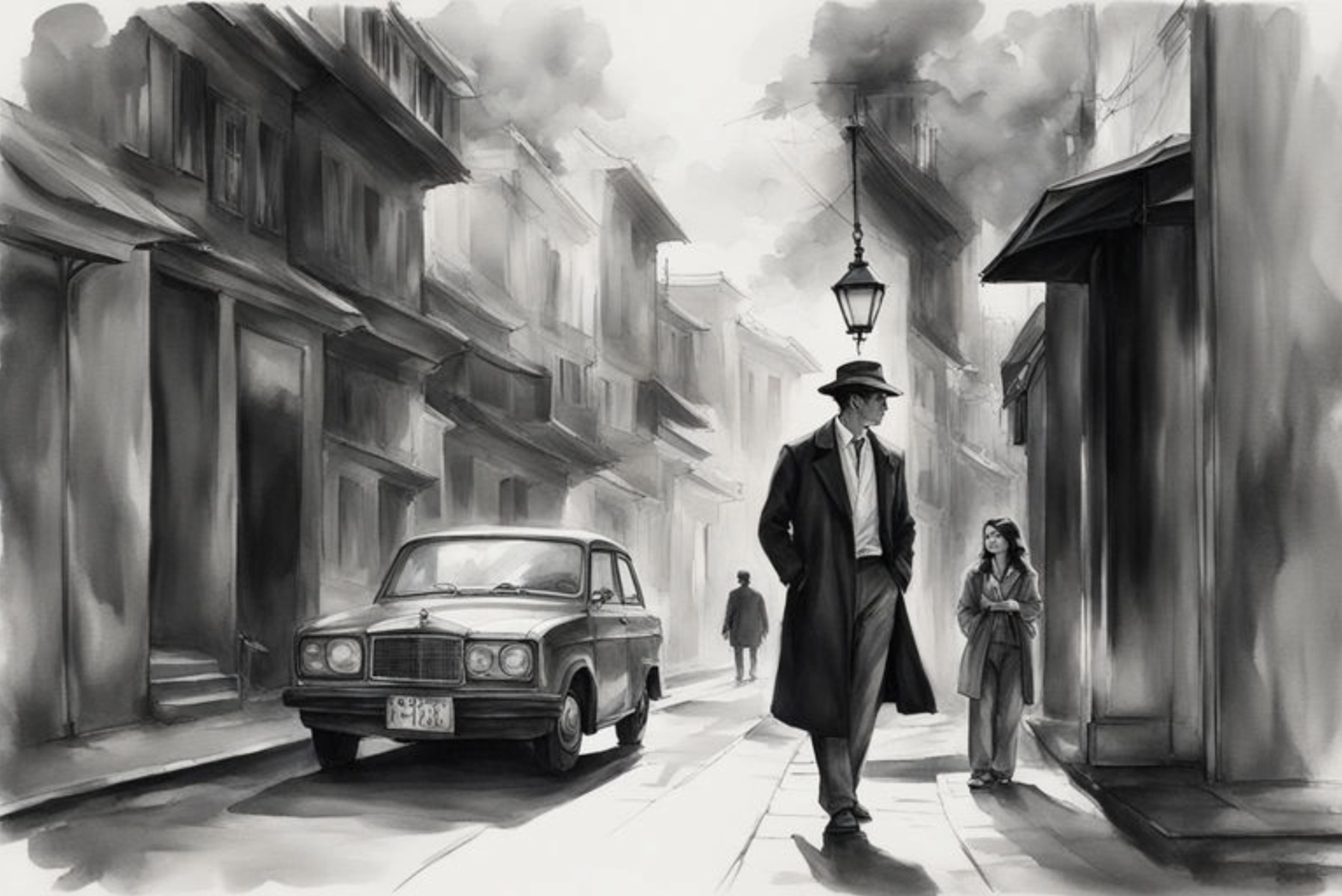
Have you ever dreamt of creating your own comic book? The world of comic book creation might seem daunting, filled with intricate illustrations and complex inking techniques. But what if we told you that captivating storytelling can begin with something as simple as line art?
Simple line art forms the foundation of countless iconic comic book characters and stories. From the bold lines of Superman to the expressive lines of manga heroes, mastering the art of line work empowers you to create dynamic visuals that fuel your narrative.
But where do you begin? This comprehensive guide will unveil the secrets of comic book line art, offering practical tips, exploring various techniques, and highlighting the power of platforms like Dashtoon to simplify and support your creative journey.
A Legacy in Lines: How Vintage Comics Captivated Readers with Simplicity
Imagine yourself flipping through a classic issue of Action Comics featuring Superman, or marveling at the dynamic panels of early Marvel titles. These comics relied heavily on simple line art, yet they delivered powerful narratives and unforgettable characters.
The secret? These artists understood the power of clear lines to convey emotions, action, and setting. Bold lines captured the strength of a hero, while delicate lines expressed vulnerability or movement. This focus on simplicity allowed readers to immerse themselves in the story without getting bogged down by overly detailed illustrations.
Here's a table showcasing how legendary comic book artists from different eras utilized comic book line art to achieve distinct effects:
Platforms like Dashtoon offer AI user-friendly tools to help you create dynamic comic book line art. With features like pre-built templates and drag-and-drop functionality, even complete beginners can create captivating panels that lay the groundwork for your story.Also read: Exploring Comic Book Art: Comic Book Sketches & Techniques
From Script to Splash Page: Building Your Foundation with Basic Techniques
Now that you've grasped the power of simplicity, let's delve into some fundamental techniques for creating comic book line art. Remember, you don't need professional-grade tools to get started!
Essential Tools:
- Pencils: A good set of pencils with varying hardness (HB, 2B, etc.) allows for flexibility in line weight.
- Paper: Smooth, high-quality paper like Bristol board prevents smudging and provides a clean surface for inking (if going traditional).
- Eraser: A kneaded eraser is ideal for lifting graphite cleanly without damaging the paper.
- Light Box (Optional): This tool helps you transfer your initial sketch onto a new sheet of paper for cleaner inking (optional for traditional methods).
- Drawing Tablet (Optional): If working digitally, a pressure-sensitive drawing tablet allows for greater control over line weight and pressure.
Mastering Line Weight:
Line weight plays a crucial role in conveying depth and dimension in your artwork. Here's a breakdown of different line-weight applications:
- Thick Lines: Used for bold outlines, prominent features, and creating a sense of weight and power.
- Medium Lines: Ideal for defining details, clothing folds, and establishing a balance between thick and thin lines.
- Thin Lines: Used for subtle shading, textures, and creating a sense of depth and background elements.
Here are some exercises to practice line weight control:
Simple Shapes:
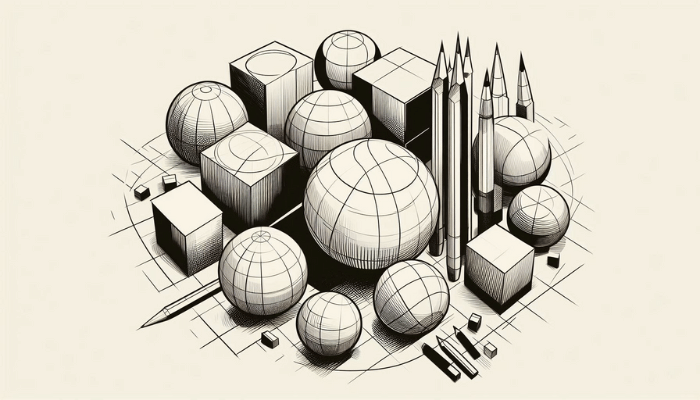
Draw basic shapes like spheres and cubes, focusing on utilizing different line weights to suggest depth and form.
Hatching and Cross-Hatching:
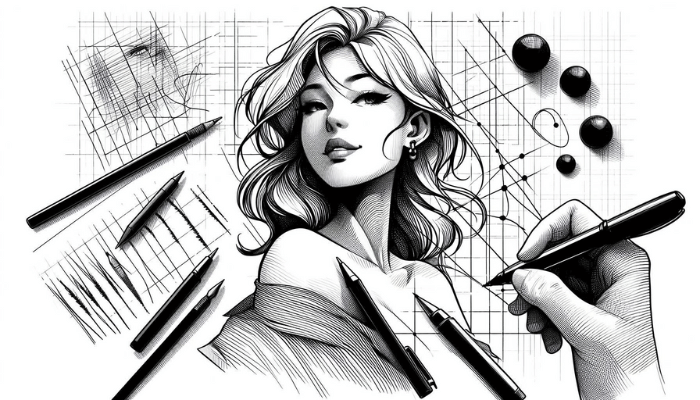
Practice creating textures by drawing parallel or intersecting lines with varying thickness.
Line Weight Scales:
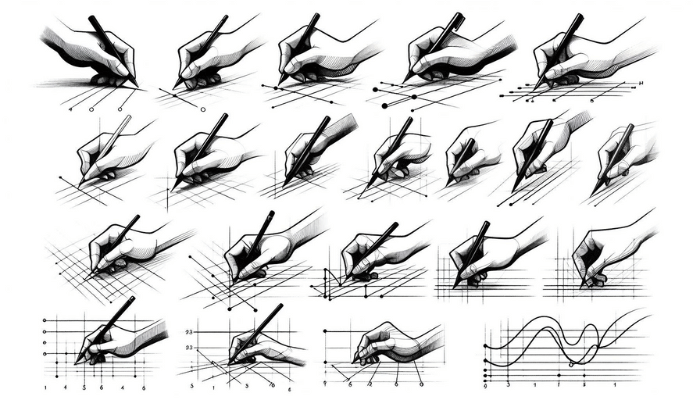
Draw a series of lines, gradually increasing and decreasing pressure to create a visual scale of line weight.
Beyond Lines: Exploring Basic Shading Techniques
Even with simple line art, you can add depth and texture using basic shading techniques. Here are two popular methods:
Stippling:
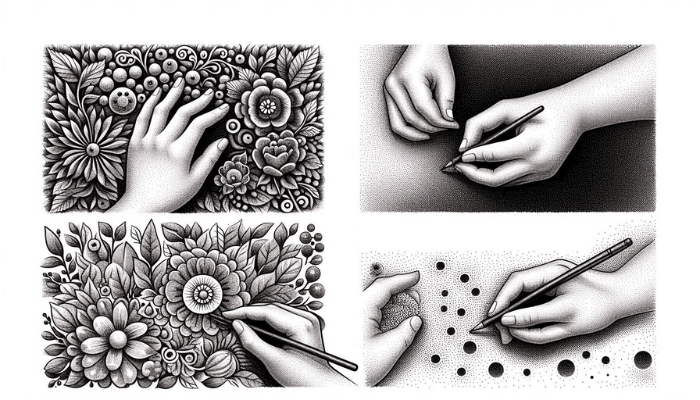
Creating textures and shading with tiny dots of varying density.
Cross-Hatching:

Overlapping lines at different angles create shadows and darker areas.
Table: Shading Techniques and Their Effects
Building Dynamic Panels: The Power of Composition in Comic Book Line Art
Composition refers to the arrangement of elements within a panel to create a visually engaging and informative experience for the reader. Mastering the art of composition in comic book line art allows you to guide the reader's eye, build suspense, and enhance the emotional impact of your story.
Here are some key elements to consider when composing your panels:
Rule of Thirds:
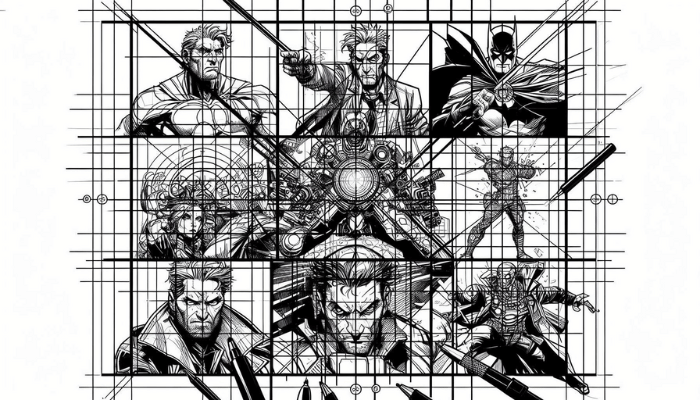
Dividing the panel into a 3x3 grid and placing key elements along the intersecting lines creates a balanced composition. (This is a suggestion, not a strict rule)
Leading Lines:
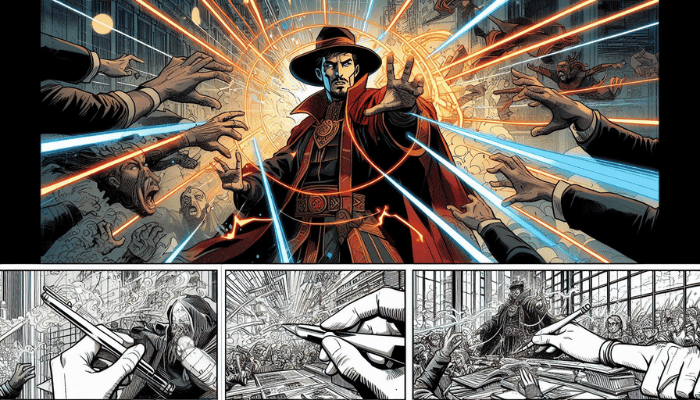
Lines within the panel that draw the reader's eye towards a specific point of focus.
Perspective:

The point of view from which the scene is drawn. (e.g., bird's-eye view for a sense of power, worm's-eye view for vulnerability)
Shot Size:
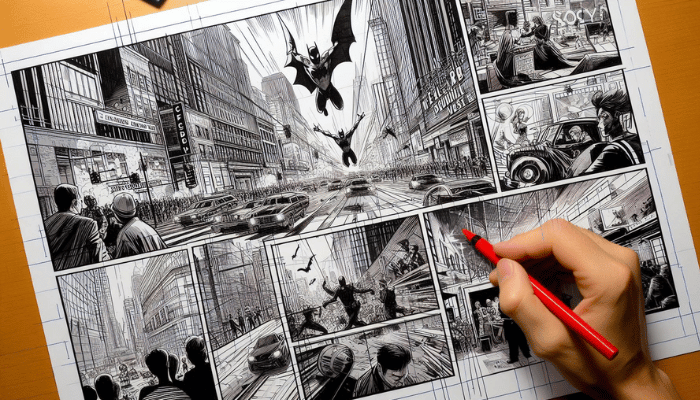
The distance between the viewer and the subject. (e.g., close-up for emphasis, wide shot for establishing scene)
Examples of Composition in Action:
Dutch Angle:
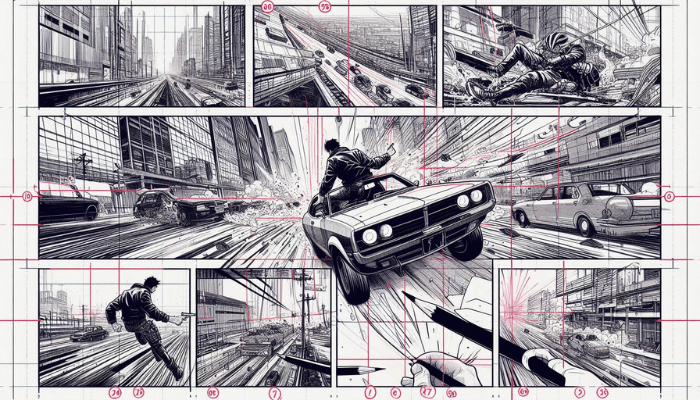
Tilting the horizon line creates a sense of unease or disorientation.
Wide Shot Panel:
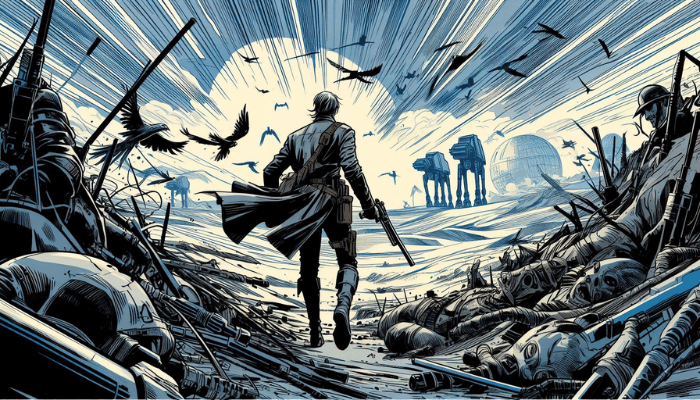
A wide shot with thin lines and lighter tones establishes a vast landscape, emphasizing the scale and isolation of the environment.
Close-Up Panel:
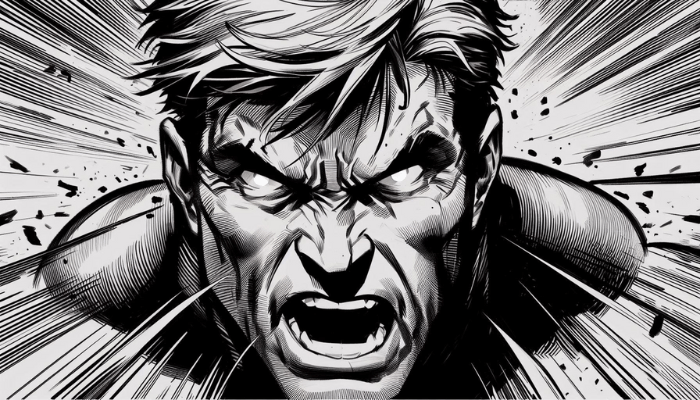
A close-up panel with thick lines and heavy shading focuses on a character's intense expression, conveying a sense of urgency or anger.
How AI Can Elevate Your Workflow? Try Dashtoon.
The world of comic book creation can be exhilarating, but the technical aspects of drawing and inking can sometimes feel like a hurdle. That’s where Dashtoon comes in, a user-friendly platform designed to empower aspiring comic creators like you!
Dashtoon offers a suite of innovative tools that simplify your workflow and elevate your comic book line art, allowing you to focus on the heart of comic book creation: storytelling. Here's how Dashtoon makes this process so much easier.:
Effortless Layout Creation:
- Pre-built Templates: Ditch the blank page anxiety! Dashtoon offers a variety of pre-built panel templates for different comic book layouts, helping you structure your pages from the get-go.
- Drag-and-Drop Functionality: Easily arrange panels within your pages using a simple drag-and-drop interface. No need for tedious manual measurements or complex layout software.
- Panel Customization: Don't feel confined to the templates! You can customize panel size, shape, and gutters to fit your unique artistic vision.
AI-Powered Inking Revolution:
- Effortless Uploading: Simply upload your clean pencil sketches directly into Dashtoon's interface. No need for time-consuming scanning or meticulous digital linework.
- Intelligent Line Recognition: Dashtoon's AI analyzes your sketch, accurately recognizing the intended lines and shapes.
- Refined Linework with a Click: With the magic of AI, Dashtoon automatically generates clean, refined lines based on your sketch, saving you hours of inking time.
- Maintain Creative Control: While the AI takes care of the heavy lifting, you can still customize the linework to your liking using Dashtoon's editing tools. Adjust line weight, add flourishes, or erase unwanted lines – the creative control remains in your hands.
Beyond Lines: A Collaborative Workspace
Dashtoon isn't just about line art magic! It's a collaborative workspace that empowers you throughout your comic creation journey.
- Story Scripting Tools: Outline your script, write dialogue, and develop your characters directly within Dashtoon's interface.
- Coloring and Lettering Tools: Breathe life into your panels with a variety of coloring tools and lettering options.
- Seamless Collaboration: Invite fellow creators to contribute to your project, allowing for teamwork on scripting, inking, coloring, and lettering.
Conclusion
You've grasped the fundamentals of comic book line art, explored various techniques, and discovered the potential of platforms like Dashtoon to streamline your workflow. Now it's time to unleash your creativity and put it all together to tell your story!
Here is a summary to guide you on your comic book creation journey:
- Start Small, Dream Big: Don't be intimidated by the idea of creating a full-length graphic novel right away. Begin with short stories or single-page comics to hone your skills and build confidence.
- Practice Makes Perfect: The more you draw, the more comfortable you'll become with line art techniques. Experiment, create sketches, and don't be afraid to make mistakes – that's how you learn and grow as an artist.
- Find Your Style: Don't feel pressured to mimic other artists. Explore different styles, experiment with line weight and composition, and discover what resonates with you and your story.
- Storytelling is King: Remember, comic book line art serves the story. Use your lines effectively to convey emotions, guide the reader's eye, and create a visually engaging narrative experience.
- Embrace the Community: Connect with other comic book creators online or in local art groups. Share your work, get feedback, and learn from each other's experiences.
The world of comic book creation is a vibrant and rewarding journey. With dedication, practice, and the power of comic book line art, you have the potential to bring your unique stories to life and captivate readers with your visual storytelling prowess.
So, grab your creative hat, unleash your creativity, and embark on your comic book adventure today!
Additional Resources:
- Online Comic Book Communities: https://discord.com/invite/DwBuquQABM
- Comic Book Art Tutorials: https://www.youtube.com/playlist?list=PLf5_EN2BltjD9DTK5rxaGQLnjurSdcVOy
Remember, the world of comic creation awaits! Dashtoon is by your side to make it a reality. With its user-friendly tools and AI comic generation, Dashtoon empowers aspiring creators to focus on storytelling and bring their artistic visions to life.
